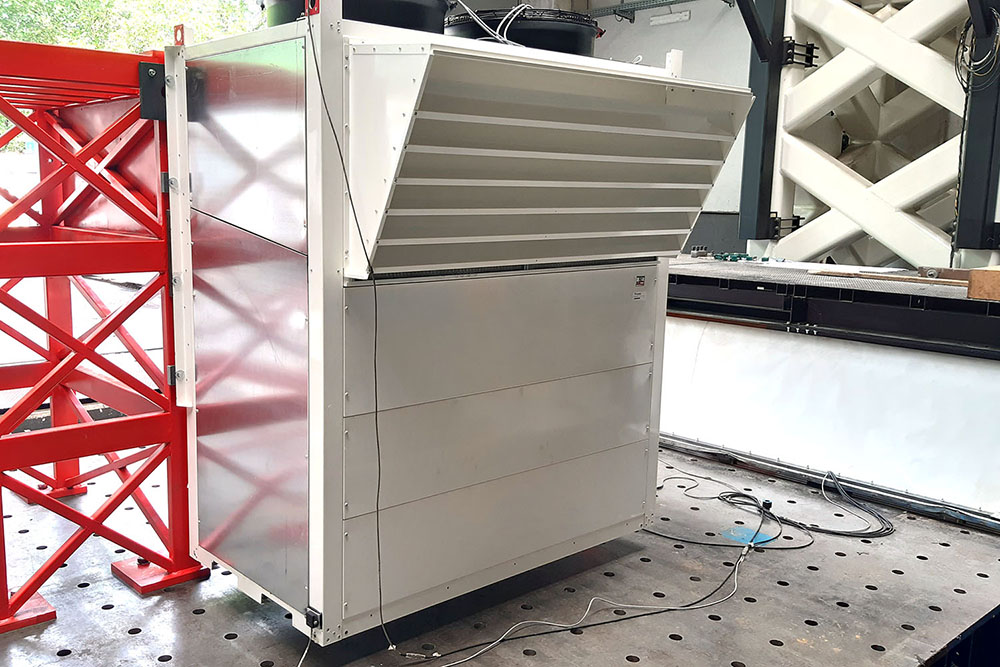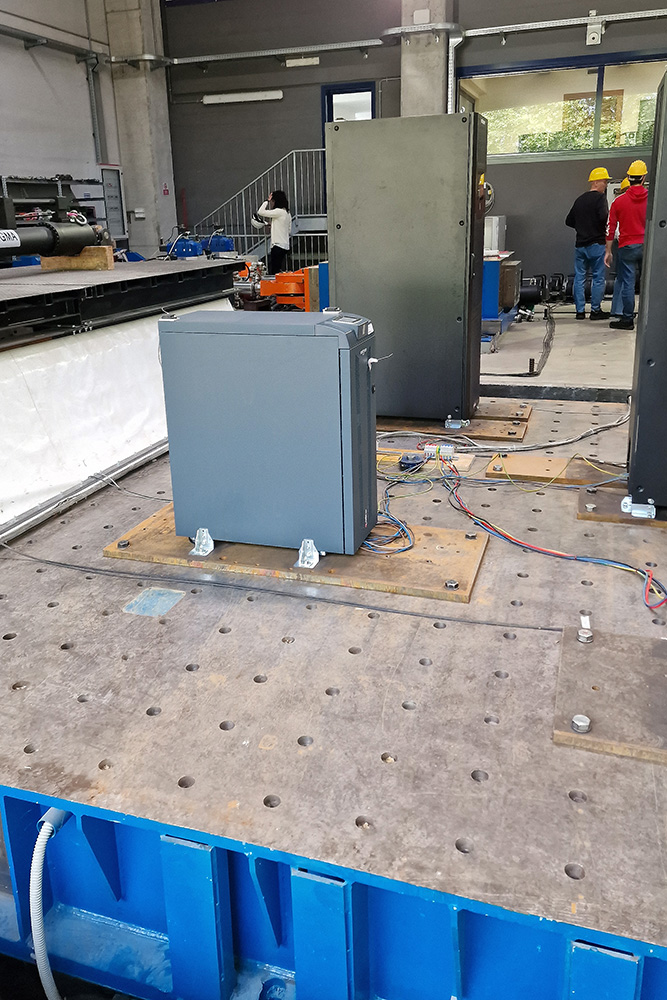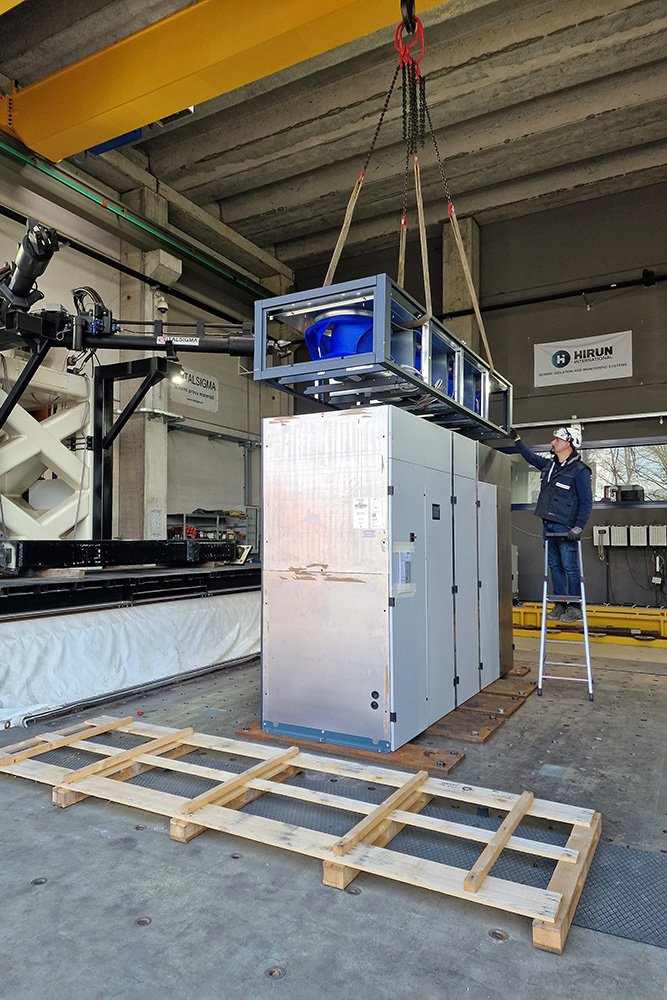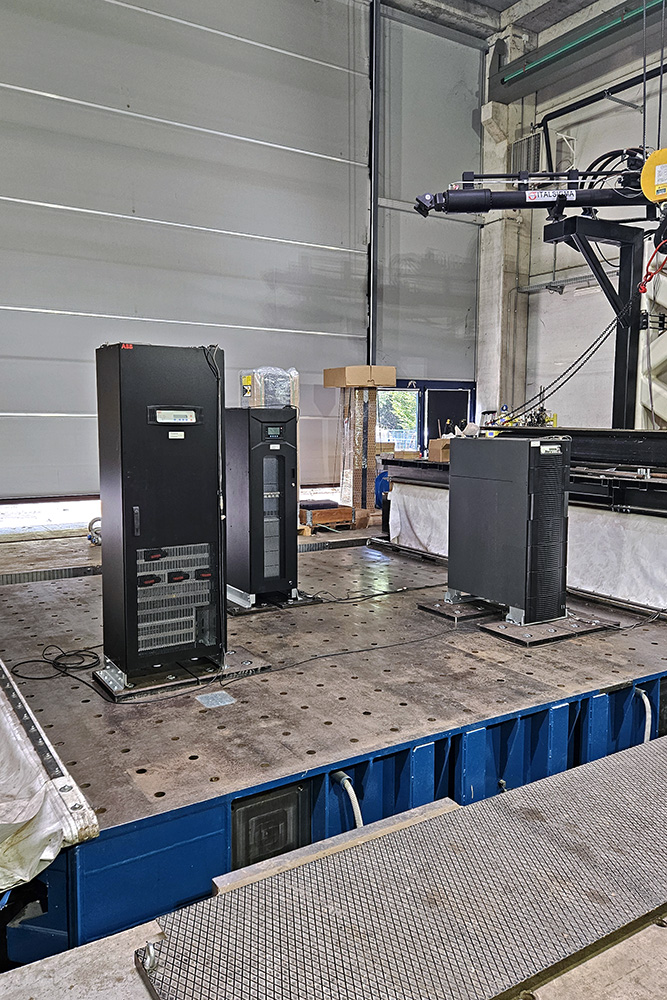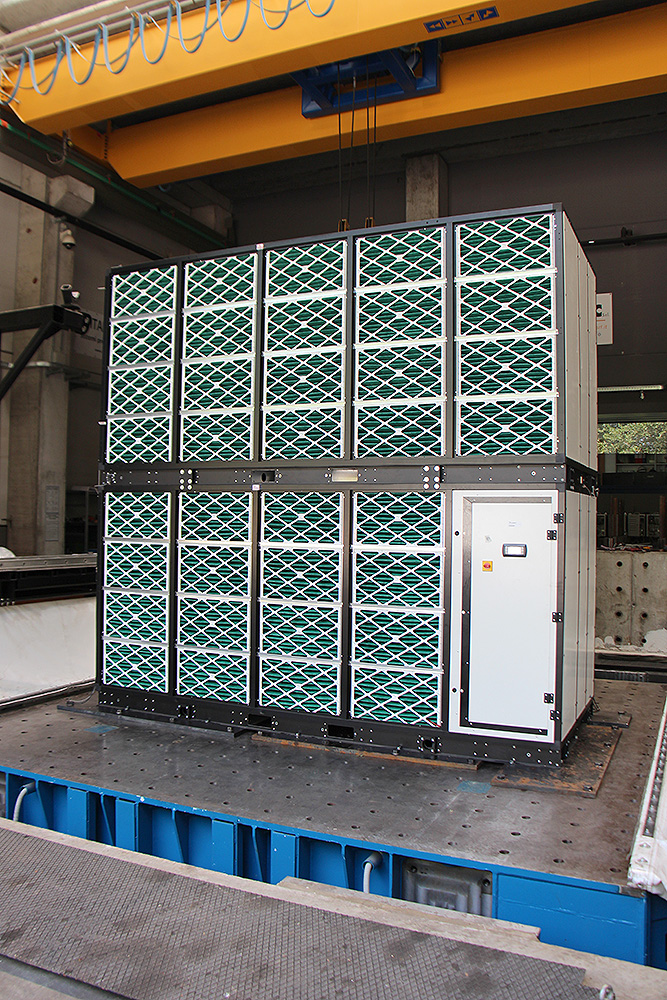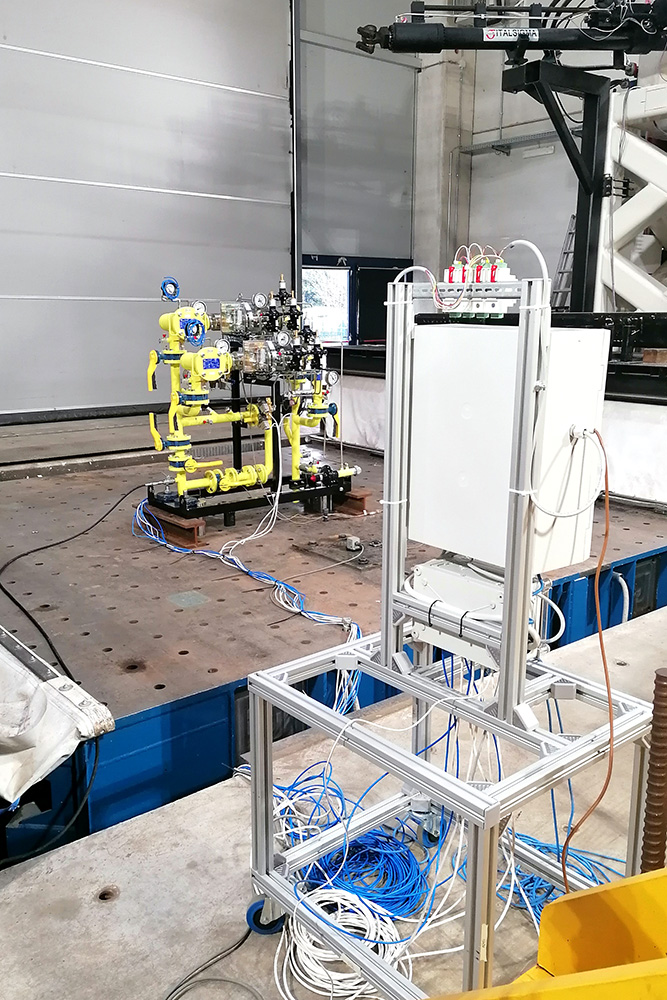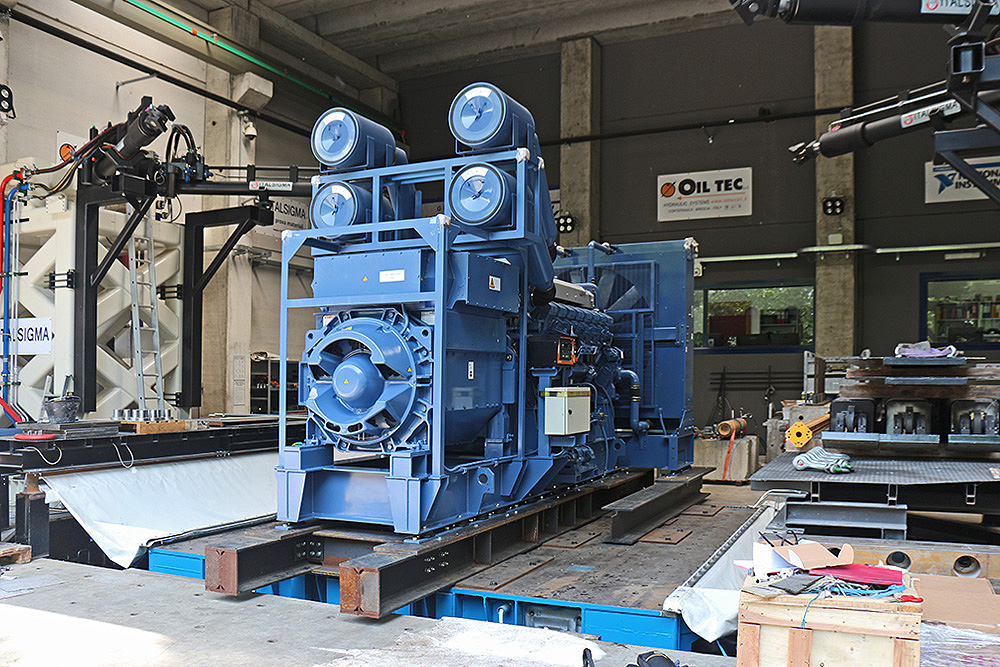The assessment of the seismic behaviour of industrial products is a strategic activity that helps to ensure the safety of structural and non-structural elements used in areas at risk of earthquakes. The activity is focused on the analysis and the assessment of the seismic behaviour of structural components, such as insulators and dampers, and non-structural components produced using industrial or industrialisable processes. This is fundamental to ensuring the reliability and safety of products intended for use in buildings and infrastructure subject to seismic risk.
Operating in institutional and commercial settings, this work encompasses a broad spectrum of services, from applied numerical research to full-scale or laboratory experimentation. Research is primarily conducted in response to requests from institutions such as the Civil Protection Department, the ReLUIS consortium, and the European Commission. At the same time, our accumulated expertise enables us to support Italian and international companies in developing, prototyping and seismically qualifying their products.
Eucentre’s laboratory has obtained the role of notified body for the performance of triaxial seismic qualification tests according to the main internationally recognised standards (see normative list), as well as Accredia accreditation according to EN 17025:2018. The laboratory’s activities also include developing and implementing innovative structural monitoring systems integrated with Eucentre’s cloud platform.
 Eucentre is a non-profit private law foundation whose mission is to conduct research and provide training and services in earthquake and safety engineering
Eucentre is a non-profit private law foundation whose mission is to conduct research and provide training and services in earthquake and safety engineering  Eucentre promotes science, research and innovation for the benefit of the community, offering targeted methodologies and concrete solutions for prevention, safety and resilience. It collaborates with institutions and companies to disseminate competencies for the common good.
Eucentre promotes science, research and innovation for the benefit of the community, offering targeted methodologies and concrete solutions for prevention, safety and resilience. It collaborates with institutions and companies to disseminate competencies for the common good. Shake-tables
Shake-tables Other test systems
Other test systems Eucentre carries out research activities in earthquake engineering and risk reduction through laboratory testing and numerical analysis, aiming to improve the seismic performance of structures and soils and to develop innovative seismic retrofitting techniques.
Eucentre carries out research activities in earthquake engineering and risk reduction through laboratory testing and numerical analysis, aiming to improve the seismic performance of structures and soils and to develop innovative seismic retrofitting techniques. The Foundation promotes diverse and high-quality training activities aimed at academic and professional contexts, with constantly updated and innovative programs and initiatives designed to meet the evolving needs of the sector and society
The Foundation promotes diverse and high-quality training activities aimed at academic and professional contexts, with constantly updated and innovative programs and initiatives designed to meet the evolving needs of the sector and society  Eucentre ensures communication aimed at informing institutions, professionals, and citizens about ongoing activities and projects, with the goal of disseminating useful and accessible content and knowledge. It contributes to promoting a shared and informed culture of prevention and resilience.
Eucentre ensures communication aimed at informing institutions, professionals, and citizens about ongoing activities and projects, with the goal of disseminating useful and accessible content and knowledge. It contributes to promoting a shared and informed culture of prevention and resilience.
